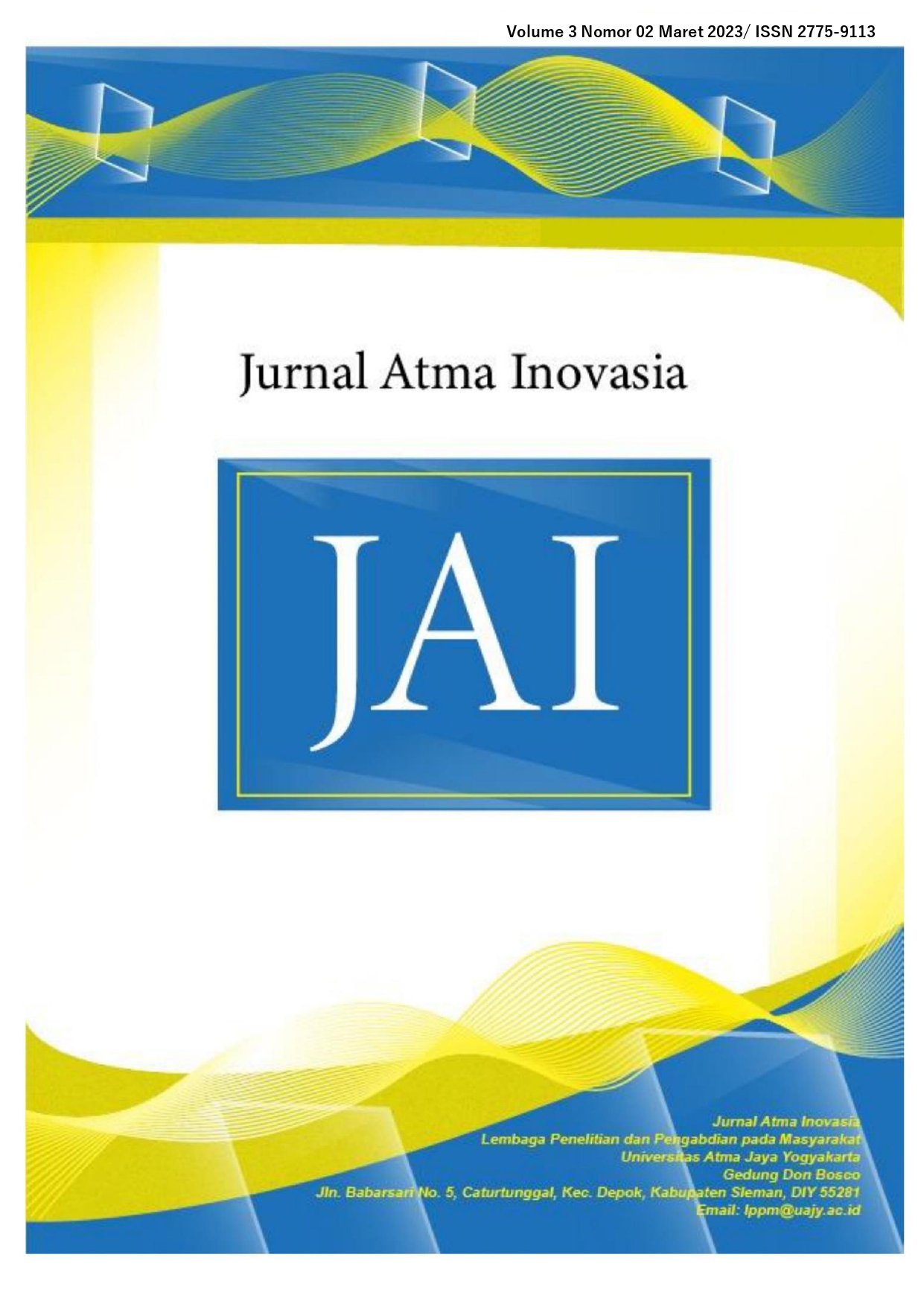Pengembangan area wisata ATV dan hammock di Dusun Trucuk, Kalurahan Triwidadi
DOI:
https://doi.org/10.24002/jai.v3i2.6849Keywords:
alami, prinsip ekologis, wisata tepi sungaiAbstract
The development of the ATV and hammock tourism area is part of the design of the community-based tourism region along the Progo River in Trucuk Hamlet. The design theme is natural and based on ecological principles. Minimal environmental intervention with a maximum provision of tourist facilities is carried out by by conserving the local vegetation maximally and selecting environmentally friendly construction materials and permeable surface materials. The ATV tourist area is the end of a series of areas with a bridge connecting this tourist area with the Progo River bank area on the other side. This area provides an ATV point and track and a playground. The hammock tourist area in the middle of the region functions as a resting point where visitors can lie down in the hammock, eat at a floating restaurant, and take a boat down the Progo River.
References
P. Kabupaten Bantul, Rencana Detail Tata Ruang BWP Pajangan. 2009.
P. Kabupaten Bantul, Bantul Smart City. 2018.
F. Celik, “Ecological Landscape Design,” Adv. Landsc. Archit., 2013.
C. Hernandez-santin, M. Amati, S. Bekessy, and C. Desha, “A Review of Existing Ecological Design Frameworks Enabling Biodiversity Inclusive Design,” Urban Sci., vol. 6, p. 95, 2022.
H. Liu, C. Hou, and S. R. Ramzani, “Application of ‘Ecological Design’ Concept in Rural Leisure Landscape Design,” Adv. Soc. Sci. Educ. Humanit. Res., vol. 341, pp. 401–405, 2019.
K. Chaowana, S. Wisadsatorn, and P. Chaowana, “Bamboo as a sustainable building material—culm characteristics and properties,” Sustain., vol. 13, no. 13, 2021.
P. F. Borowski, I. Patuk, and E. R. Bandala, “Innovative Industrial Use of Bamboo as Key ‘Green’ Material,” Sustain., vol. 14, no. 4, 2022.
F. Binarti, S. Triyadi, M. D. Koerniawan, P. Pranowo, and A. Matzarakis, “Climate characteristics and the adaptation level to formulate mitigation strategies for a climate-resilient archaeological park,” Urban Clim., vol. 36, no. November 2020, p. 100811, 2021.
S. Tsoka, T. Theodosiou, K. Tsikaloudaki, and F. Flourentzou, “Modeling the performance of cool pavements and the effect of their aging on outdoor surface and air temperatures,” Sustain. Cities Soc., vol. 42, no. July, pp. 276–288, 2018.
F. Abbondati and L. Cozzolino, “Porous Pavements in the Context of Sustainable Urban Design Concerns,” ARPN J. Eng. Appl. Sci., vol. 15, no. 20, pp. 2327–2335, 2020.
I. Abustan, M. O. Hamzah, and M. A. Rashid, “Review of permeable pavement systems in Malaysia conditions,” OIDA Int. J. Sustain. Dev., vol. 4, no. 02, pp. 27–36, 2012.
F. Binarti, M. D. Koerniawan, S. Triyadi, and A. Matzarakis, “The predicted effectiveness of thermal condition mitigation strategies for a climate-resilient archaeological park,” Sustain. Cities Soc., vol. 76, p. 103457, 2022.
A. Muscio, “The solar reflectance index as a tool to forecast the heat released to the urban environment: Potentiality and assessment issues,” Climate, vol. 6, no. 1, 2018.
M. Taleghani and U. Berardi, “The effect of pavement characteristics on pedestrians’ thermal comfort in Toronto,” Urban Clim., vol. 24, pp. 449–459, 2018.
S. Kappou et al., “Review Cool Pavements: State of the Art and New Technologies,” Sustain., vol. 14, no. 9, 2022.
Downloads
Published
Issue
Section
License
Copyright (c) 2023 Floriberta Binarti, Amos Setiadi, Eppatta Kaelasa Antarangga, Patric Chrisna Yuansha Putra

This work is licensed under a Creative Commons Attribution-ShareAlike 4.0 International License.










